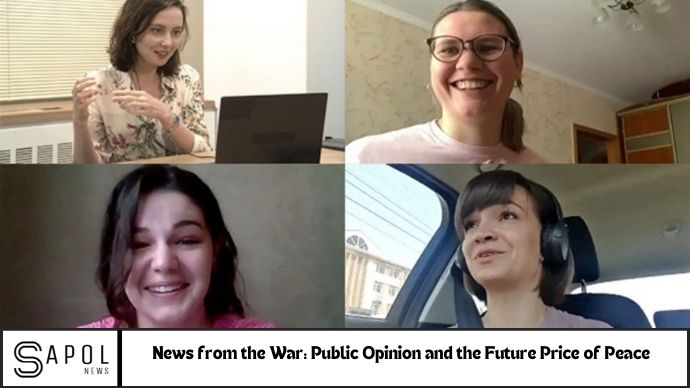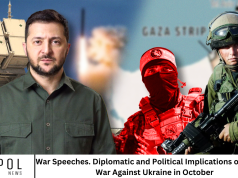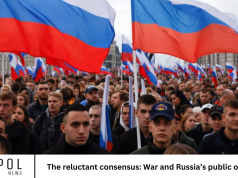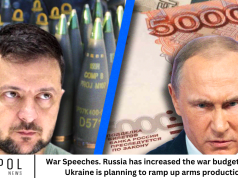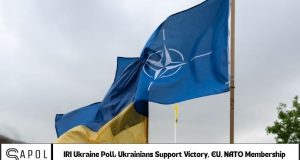News from the War: Public Opinion and the Future Price of Peace On June 14, the London School of Economics hosted the concluding event of the DINAM Ukraine discussion series, where prominent experts shared their insights on the ongoing Russian aggression against Ukraine. Titled “News from the War: Public Opinion and the Future Price of Peace”, the panel delved into how Ukrainian public opinion has evolved over 15 months of full-scale war.
Key speakers included Petro Burkovskyi, Executive Director of the Ilko Kucheriv Democratic Initiatives Foundation; Tamila Tasheva, Permanent Representative of the President of Ukraine in Crimea (since 2022); and Olga Aivazovska, Head of the Board of the Civil Network OPORA NGO. The conversation, moderated by Maria Zolkina, a Ukrainian researcher and political analyst, centered on how the Ukrainian public views potential conflict resolution models.
Burkovskyi presented key trends based on public opinion in Ukraine, highlighting a growing sense of resolve among Ukrainians. Notably, 64% of Ukrainians believe that the war will only end with a victory. He also emphasized the belief that if the West halts military aid, the fighting would likely continue, underscoring the importance of continued international support.
The discussion also touched on the radicalization of public opinion, with 31% of Ukrainians now advocating for the complete defeat of the Russian army and the disintegration of Russia itself as a necessary condition for victory. The panel further explored legal, human rights, and humanitarian arguments supporting Ukraine’s strategy to reclaim its territories, including why Crimea remains a critical “red line” for Russia and how this issue shapes the war’s dynamics.
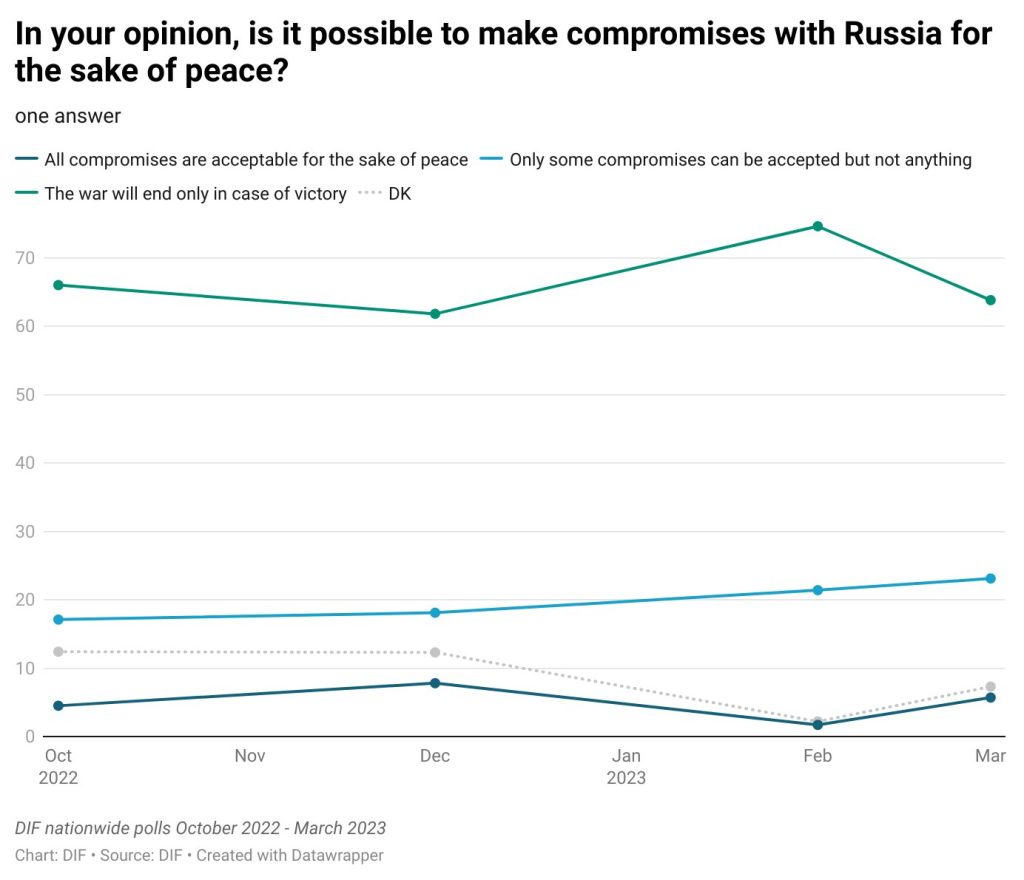
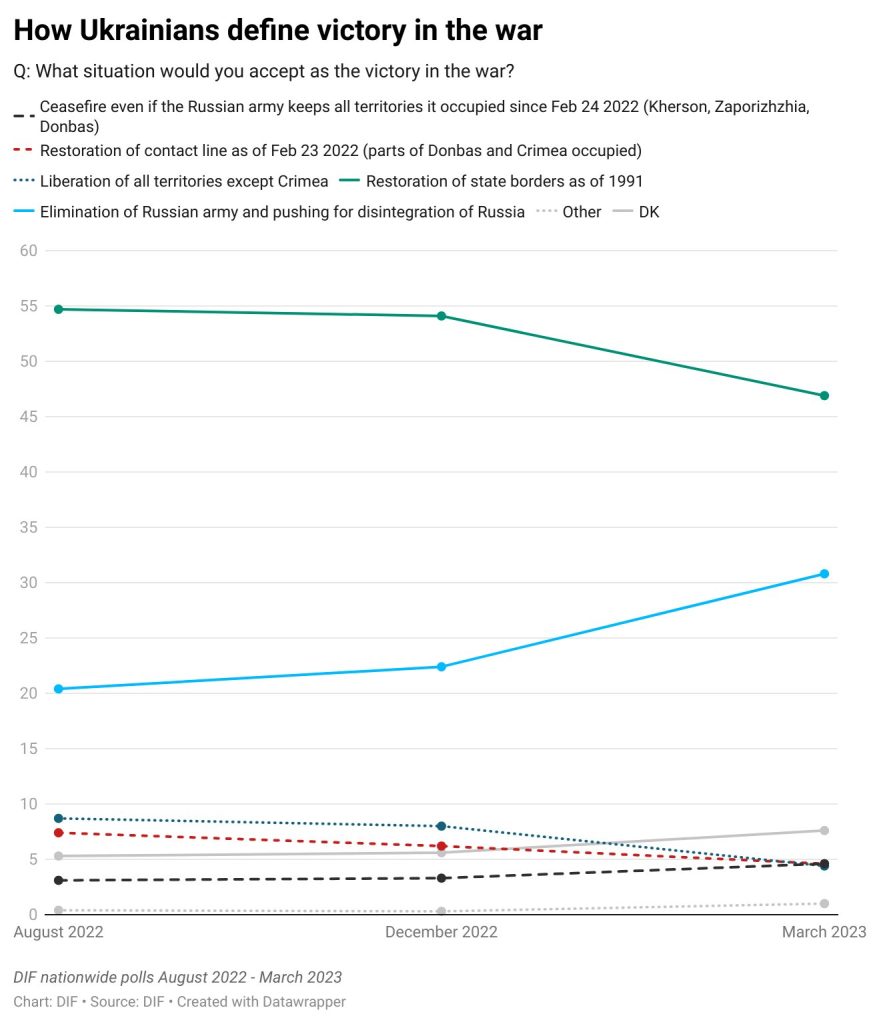
The Growing Role of Public Opinion in the Ukraine War
Public opinion is increasingly shaping the course of the war and the policies of countries involved. In the United States, for example, the ongoing support for Ukraine has fluctuated, particularly as the costs of war continue to rise. As of 2024, 31% of Americans feel the U.S. is providing too much support to Ukraine, a notable shift from 7% in 2022. This reflects a larger trend of fatigue surrounding the prolonged conflict and its mounting costs. However, a significant portion of the U.S. population (about 48%) still believes that continued support for Ukraine is essential to defeating Russian aggression.
The situation in Europe is similarly complex, with citizens in countries like Poland and Germany expressing strong support for Ukraine. However, rising energy costs, inflation, and concerns about security within the EU are beginning to influence public sentiment. As the war drags on, European leaders may face increased pressure to balance support for Ukraine with domestic challenges.
The Changing Face of Support: Partisan and Generational Divides
Support for Ukraine is not uniform across political lines. In the U.S., Republicans are increasingly divided on the issue. Half of Republicans (49%) now say the U.S. is providing too much aid to Ukraine, compared to only 16% of Democrats. Among Democrats, 36% are now asking for increased support, while Republicans remain more focused on reducing involvement. Similarly, younger Americans from both parties are more likely to question the level of U.S. assistance to Ukraine, signaling a potential shift in long-term public opinion on foreign military involvement.
In Europe, the political landscape is also evolving. With elections looming in several countries, the rise of right-wing populism has led to more vocal calls for reassessing Ukraine’s membership in the EU and NATO. This shift in public opinion could have significant ramifications for future foreign aid and international support for Ukraine’s government.
The Price of Peace: What Will It Take to End the War?
While Ukraine remains resolute in its demand for military support to defeat Russian forces, the growing costs of the war, both in human lives and resources, will inevitably impact future negotiations. The question on the table is not only how much longer Ukraine can endure but also how much more Western powers are willing to invest in the conflict. Public opinion, particularly the weariness felt by ordinary citizens in Europe and the U.S., will ultimately shape how peace talks unfold in the coming years.
As both sides experience heavy losses, the idea of compromise and peace settlements is beginning to take center stage in discussions. The pressure to find a solution that benefits both Ukraine and Russia, while protecting the interests of the international community, is becoming increasingly urgent. However, with growing political instability in Western democracies and economic downturns globally, the price of peace will likely rise.
The Long Road Ahead: What Can We Expect?
The future of Ukraine depends heavily on the continued support of its allies, but as public opinion shifts, the ability of governments to provide unwavering assistance becomes less certain. In the coming months and years, several factors will determine the outcome of the war:
- Domestic pressures in both the U.S. and Europe, particularly as election cycles continue.
- Public fatigue with ongoing foreign conflicts and rising economic costs.
- The strategic decisions made by Ukrainian leaders in managing both military resources and diplomatic channels.
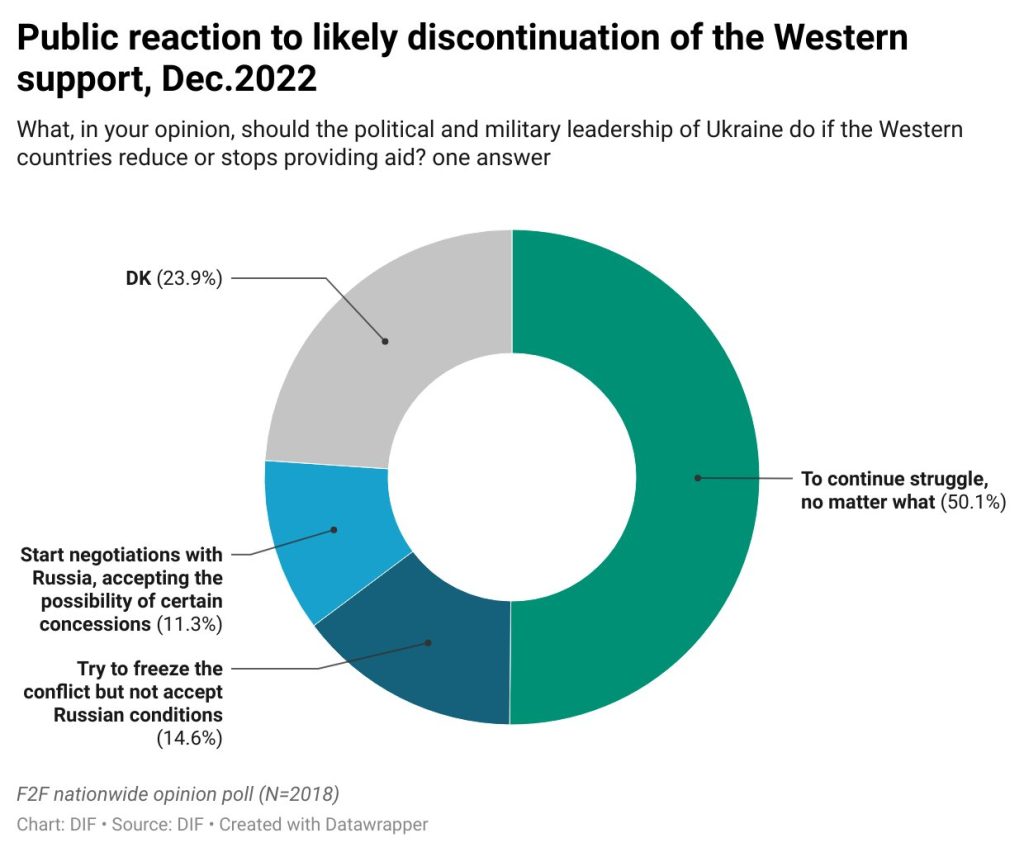
May you also like it:
Public Views on Ukraine and U.S. Involvement in Russia-Ukraine War
The Meaning of Sovereignty: Ukrainian and European views of Russia’s War on Ukraine
More Americans want the US to stay the course in Ukraine as long as it takes
Conclusion
As we navigate through the complexities of the Ukraine war, it is clear that public opinion will play a pivotal role in shaping the future. While many still support Ukraine’s cause, the growing financial and human costs are creating divisions, particularly in the U.S. and Europe. The price of peace will likely be a compromise that balances military support, economic interests, and global security.
The question is no longer just whether Ukraine can win the war, but what peace will look like and how much it will cost. The road to peace may be long and arduous, but understanding the changing views of the public will be key to determining when and how the war will come to an end.
FAQ
What is public opinion on U.S. support for Ukraine?
As of 2024, 31% of Americans believe the U.S. is providing too much support to Ukraine.
How has public opinion in the U.S. shifted over time?
Support for Ukraine has decreased since March 2022, with many now questioning the level of aid provided.
How does public opinion differ by political affiliation?
49% of Republicans think the U.S. is giving too much support, while 36% of Democrats call for more assistance.
How does public opinion affect peace negotiations?
Public opinion plays a critical role in shaping government policies, potentially influencing how and when peace negotiations occur.
What is the price of peace in the Ukraine conflict?
The price of peace may involve a compromise on territorial issues and military support, heavily influenced by public opinion.
What does the future hold for Ukraine’s public support?
Continued domestic challenges and shifting public sentiment may impact Ukraine’s international support and future peace talks.

